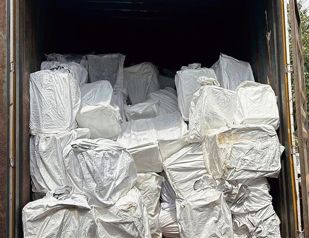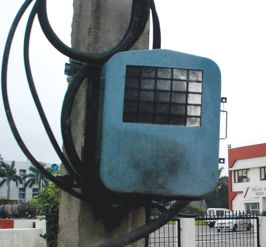State-wise, Bihar appears to be worst-hit with storage capacity 82% lower than normal. Photo for representation/PTI
Vibha Sharma
Chandigarh, September 9
While food inflation continues to burn a hole in the pocket of an average Indian, the current deficiency in the southwest monsoon, falling reservoir levels and apprehensions of a strengthened El Nino continuing through Rabi sowing months are not painting a very heartening picture from many angles, especially the food inflation point of view.
El Nino has already impacted the progress and spread of the June-September season. According to the latest government data, except for the reservoirs located inPunjab, Himachal Pradesh, Uttarakhand, Gujarat and Nagaland, and to an extent Tripura, the level in the majority of 150 reservoirs in the country is worrying.
The worst hit is Bihar, the southern states of Telangana, Andhra Pradesh, Tamil Nadu and Kerala, West Bengal, Uttar Pradesh and Jharkhand.
The fact is, as monsoon enters in the last phase of its four-month stay in India, the cumulative rainfall deficiency is 11% and the storage level in 150 key reservoirs lower than the last 10 year’ average.
Monsoon, inflation and El Nino
Backed by erratic monsoon and other weather conditions, the retail price inflation jumped to 7.44% in July. Food inflation surged to 11.51%, the highest since January 2020, driven by vegetables (37.3%), spices (21.6%), cereals (13%), pulses (13.3%) and milk (8.3%) as per the government data.
Now according to a US weather agency, there is now more than 95% chance that El Niño conditions will continue till February 2024.
Earlier, the probability was pegged at 90%.
El Niño/La Niña Southern Oscillation (ENSO) majorly influences climate patterns across the world.
It is all about fluctuating ocean temperatures in the central and eastern equatorial Pacific along with changes in the atmosphere.
El Nino conditions till February mean changes in normal weather patterns during winter months when the Rabi sowing takes place in India, stress on reservoirs and possibly production figures.
150 reservoirs, their situation
The Central Water Commission (CWC) monitors live storage status of 150 reservoirs of the country on a weekly basis and issues a weekly bulletin every Thursday.
According to the CWC, the total live storage capacity of 150 reservoirs is 178.784 BCM which is about 69.35% of the live storage capacity of 257.812 BCM.
The storage in the reservoirs is 111.737 billion cubic metre (BCM), which is 62% of the live storage capacity.
Last year, the live storage available in these reservoirs was 150.851 BCM and the average of past 10 years live storage is 129.591 BCM of the corresponding period. Thus, the live storage available in these 150 reservoirs, as per the September 6 bulletin, is 74% of the live storage of the corresponding period of last year and 86% of storage on average of the past 10 years.
In other words, the overall storage position is less than the corresponding period of last year and also less than the average storage of the past 10 years during the corresponding period in the country on the whole.
North India reservoirs
The northern region includes Himachal Pradesh, Punjab and Rajasthan.
Due to the unprecedented rains in the region in July and August, the three reservoirs in Himachal and one in Punjab are respectively 6% and 1%, above the normal.
However, the six reservoirs in Rajasthan are 17% below the 10-year average.
Overall, the 10 reservoirs in the north have a total live storage capacity of 19.663 BCM.
As per last CWC bulletin of September 6, the total live storage available in these 10 reservoirs is 16.138 BCM, which is 82.07% of their total live storage capacity.
The storage in these reservoirs during corresponding period last year was 87% and average storage of the past 10 years 82.15% of live storage capacity. Thus, overall the storage during current year is less than last year and also less than the average storage of past 10 years during the corresponding period, as per CWC.
Bihar worst hit
However, state-wise, Bihar appears to be worst-hit with storage capacity 82% lower than normal.
Other states in the red include Andhra Pradesh and Telangana (62%), Kerala (48%), Tamil Nadu (55%), West Bengal (46%), Uttar Pradesh (42%), Odisha (32%) and Jharkhand (26%).
Of the 42 reservoirs in the South, the storage in 17 is below 40%.
Join Whatsapp Channel of The Tribune for latest updates.




























